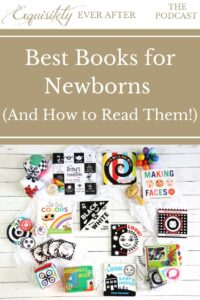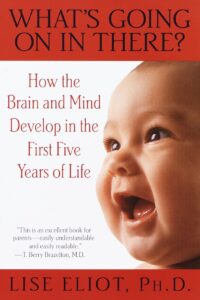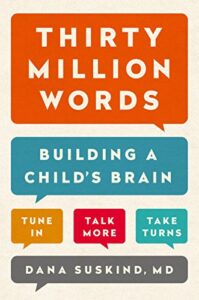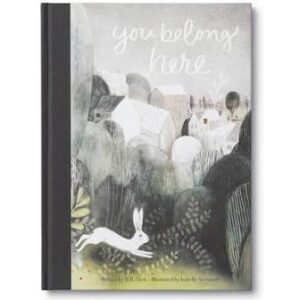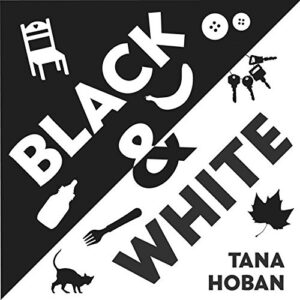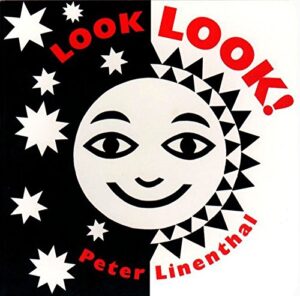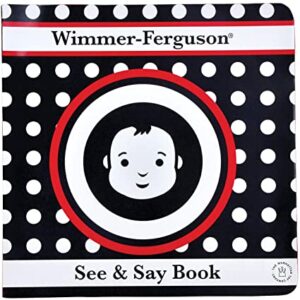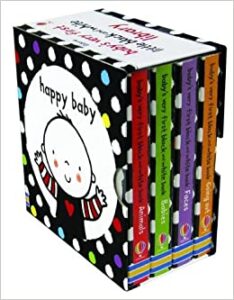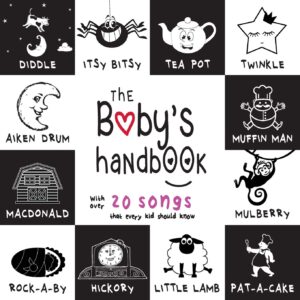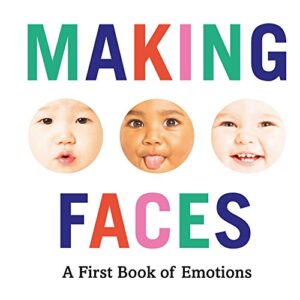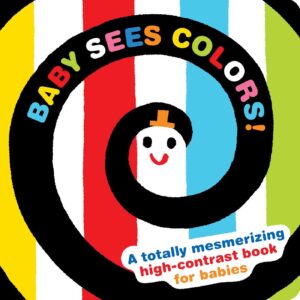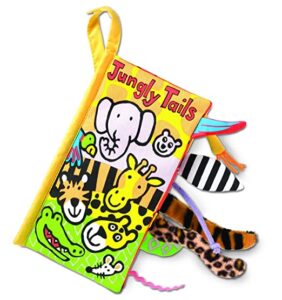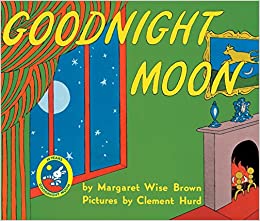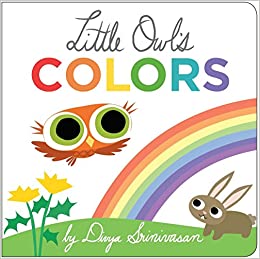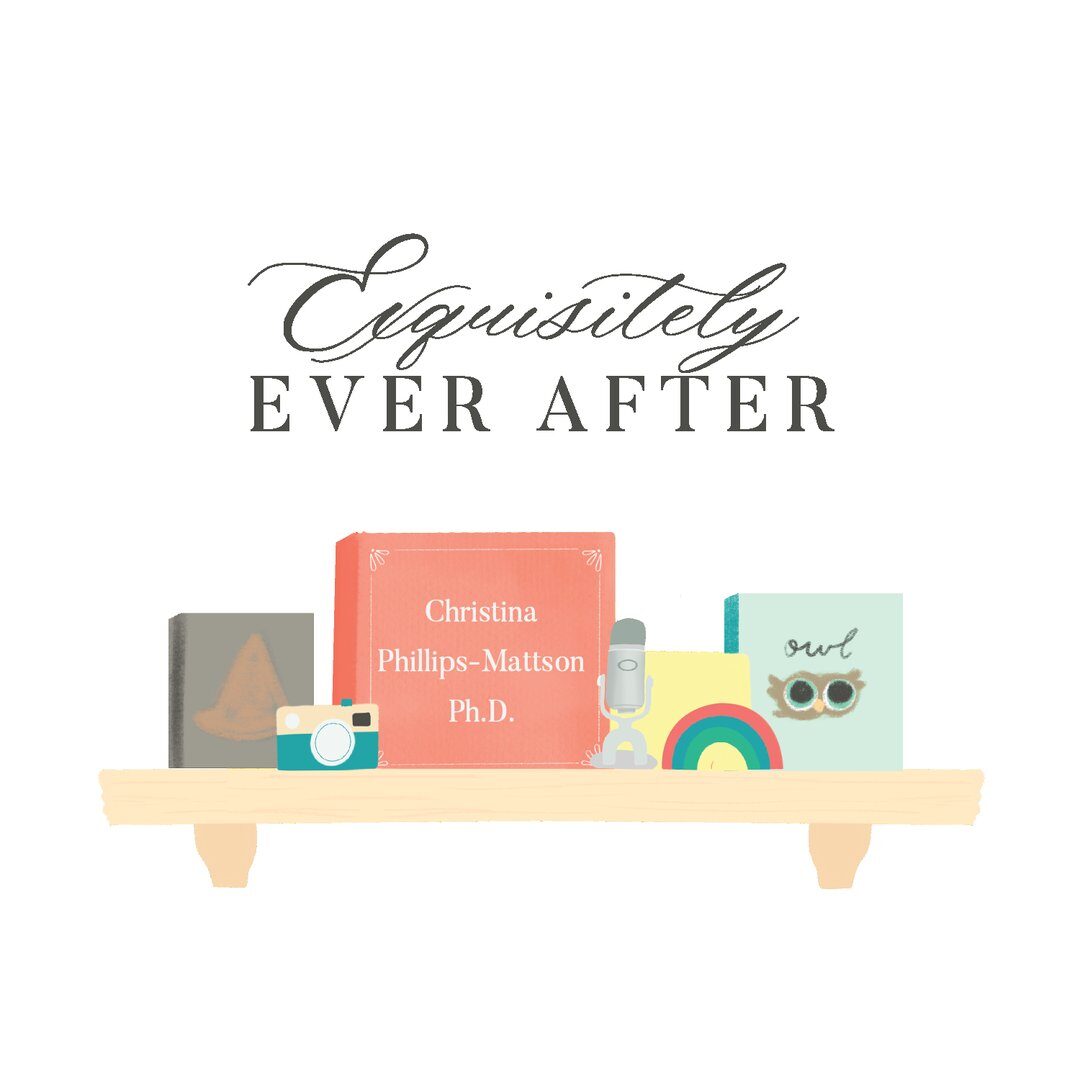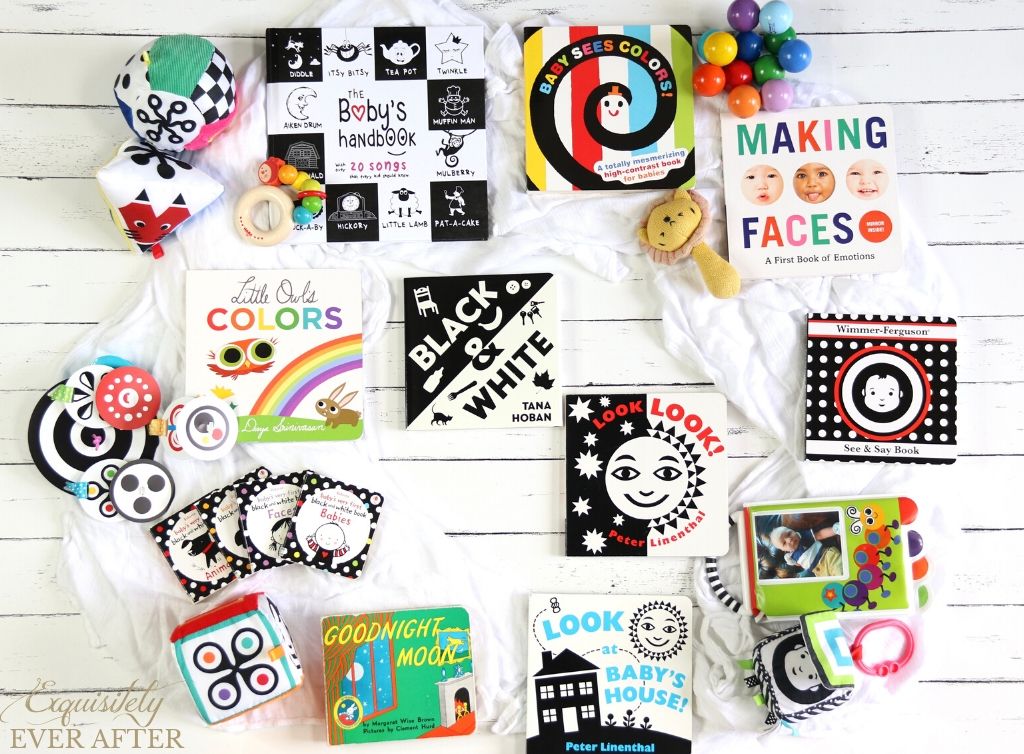
Some links are affiliate links. Please see more here.
SUMMARY: Today we put what we learned in Episode 4 into practice and discuss how to read to newborn and infant children with minimum awkwardness and maximum benefits. We discuss 1) how to get your baby accustomed to the sounds of language so she can start figuring out how it works and 2) how to make reading time an enjoyable, comforting, bonding experience for you and your baby. Additionally, we learn what attracts a newborn’s attention—bold objects or patterns, black-and-white designs, brightly colored toys, and conspicuous smiling faces—and talk about what to look for when you choose books and toys for very young babies as well as some of my favorites that my own babies have loved.
Listen to the Podcast Episode:
Books Mentioned in this Episode:
*What’s going on in there? How the brain and mind develop in the first 5 years of life by Dr. Lise Eliot
Goodnight Moon by Margaret Wise Brown
Remembrance of Things Past by Marcel Proust
*Thirty Million Words: Building a Child’s Brain: Tune In, Talk More, Take Turns by Dana Suskind
The Harry Potter Series, by J.K. Rowling, narrated by Jim Dale
The Harry Potter Series, by J.K. Rowling, narrated by Stephen Fry
Children’s Literature Grows Up: Harry Potter and the Children’s Literature Revolution by Christina Phillips-Mattson
You Belong Here by M.H. Clark and Isabelle Arsenault
Ulysses by James Joyce
*Black & White Board Book by Tana Hoban
Black on White by Tana Hoban
White on Black by Tana Hoban
*Look LOOK! by Peter Linenthal
Look at the Animals! by Peter Linenthal
Look at Baby’s House! by Peter Linenthal
Look Look Outside! by Peter Linenthal
*The Manhattan Toy Company’s Wimmer-Ferguson See & Say Book
*Usborne Baby’s Very First Little Black and White Library
*The Baby’s Handbook With Over 20 Songs That Every Kid Should Know by Dayna Martin
*Making Faces: A First Book of Emotions an Abrams Appleseed book
*Baby Sees Colors! Gakken Plus Company, illustrated by Akio Kashiwara
*Jungly Tails Jellycat company, illustrated by Anne Wilkinson
Little Owl’s Day by Divya Srinivasan
Little Owl’s Night by Divya Srinivasan
*Little Owl’s Colors by Divya Srinivasan
The Watermelon Seed by Greg Pizzoli
Brown Bear, Brown Bear What Do You See? by Bill Martin, Jr., illustrated by Eric Carle
Note: Books marked with * are the focus books of this episode.
Toys and Activities Mentioned in this Episode:
Manhattan Toy Company Shape Set
Manhattan Toy Company Tummy Time Mat
Manhattan Toy Company Travel Toy
Urban Kiddy My First Family Album
Our stroller
Our pop-up play-yard
Podcast Transcript:
Hello Everyone! Welcome to Exquisitely Ever After, a podcast where we talk about reading children’s literature to cultivate kind, intelligent, and successful kids. I’m your host, Christina Phillips-Mattson. I have a masters and a PhD in children’s and young adult literature from Harvard University and I am a writer, educator, and a mother of two little boys, a three-year-old named James and a one year old named Luke.
Today we’re going to continue talking about reading to babies! In last week’s episode, we discussed when and why it’s important to start reading to your newborns and infants (and even to your pre-borns!), which, if you haven’t listened to that episode yet, I recommend pausing this one and going back to last week’s, Episode #4, or you can go read the transcript at exquisitelyeverafter.com/episode4. Today we’re going to put what we learned into practice and discuss how to read to newborn and infant children. AND, the most fun part, we’re also going to talk about what to look for when you choose books for very young babies as well as some of my favorites that my own babies have loved.
And just a reminder, you don’t have to worry about pausing to write all of these down; I always list all of the books that I mention in the shownotes and, if there are multiple versions of a book, I will also link to the specific version that I use so that there isn’t any confusion. Additionally, in this episode I’m going to talk about a few toys for newborns that can supplement your reading, so I’ll list and link those in the shownotes, too. Just go to exquisitelyeverafter.com/episode5 and you’ll find that list. Also, looking ahead to when your baby is past the newborn stage, if you haven’t yet downloaded the FREE PDF of what I think are the 25 Best Board Books for Toddlers, that will be linked in the shownotes, too.
Okay, so last week we learned that the current research in brain development tells us that we should start reading to our babies immediately, starting at birth or even in the third trimester, because by 6 months of gestation babies can hear and remember what they’ve heard. And we also learned that there is a correlation between the amount of words a child hears spoken to her in these early years of life and her future success. So, this is all very well and good, but putting this into practice can seem stressful and, frankly, a little unnatural. After all, newborns don’t really seem to notice what we’re doing with them unless their core needs aren’t being met; i.e. they are hungry, they need to be changed, or they need to be put to sleep. So, at least at first, reading aloud to a very young baby is kind of like reading to a loaf of bread—an absolutely adorable loaf of bread, but a loaf of bread nonetheless. It can just feel silly to prop up your little swaddled bundle and start reading aloud when most likely they won’t even look at the book and will probably fall asleep within a few minutes. And it feels even more ridiculous to read aloud to your own stomach before you even have that loaf of bread in your arms. Okay, I need to stop these bread analogies. Kneadto stop. Ugh, okay enough Christina. Don’t worry—you can’t see me, but I’m rolling my eyes at myself. Can you tell that I’ve been binge-watching reruns of the “Great British Bake Off?” Oh my…
ANYWAY, when I was pregnant with my first child, the thought of reading aloud to my baby every day and being intentional about my language all the time seemed really stressful to me—I was like, great, not only do I have to keep this tiny human alive when they release me from the hospital, which already seems like a questionable decision on the part of my doctors, but now I have to worry about giving him an English literature degree before he even says his first word. Or worse, a comparative literature degree. Terrific. But, as usual, my Greek doomsday-er self was overdramatizing the situation and this really isn’t the case. So today I’m going to show you how easy and, dare I say, fun it is to read to your babies.
Let’s start with how to read to your newborn and infant with minimum awkwardness and maximum benefits. Babies begin to show interest in books at about four months of age, so when a baby is less than three or four months of age you don’t really need to worry so much about what you’re reading to her or even if she can see the book very well. Comprehension is not the goal here. The important things at this point are: 1) to get your baby accustomed to the sounds of language so she can start figuring out how it works and 2) to make reading time an enjoyable, comforting, bonding experience for you and your baby. Therefore, at this point you can really read whatever you want to your baby, be it Goodnight Moon or your law school textbook or Swan’s Way or the latest mystery novel or even a cookbook, as long as you interact with her while you read. If you want to read with expression or in the “parentese” tone that we talked about last week and that babies love so well, all the better. By hearing the rise and fall of your voice as you read a sentence, by hearing your pauses, and by hearing the inflection or stress points you put on different words, your baby will start to recognize how words fit together to make something meaningful.
And just a note here: you don’t have to awkwardly prop your baby up to see the book that you’re reading or make sure she’s aware of the page turn or anything. At this point, it isn’t really important if your baby can actually see the words on the page that your reading. Print awareness really isn’t a thing for your baby yet and, in fact, as we learned last week, for newborns and young infants face-to-face contact is actually the most important thing at this point because you want your baby to know that she is being addressed and heard and you also want to give her a chance to see as well as hear how words are being pronounced. Dr. Lise Eliot in her book What’s Going on in There?, which, again, we discussed last week, tells us that babies just four months old have already begun to figure out which mouth movements go with which sounds. Therefore, by allowing them to watch you as you read, you will help their own efforts at forming speech sounds when they’re eventually ready to start to speak.
What’s going on in there? How the brain and mind develop in the first 5 years of life
So, to put this into practice, you can lay your newborn on your lap facing you as you read or position him so that he’s in the crook of your arm gazing up at you so that he can see your mouth move as you form the words on the page. If he coos or shifts his position as you are reading, take notice and respond to him. And you can take little breaks while you’re reading to address him and make him feel like he’s a part of the experience you’re having together. You can say things like, “Yes, James, it was a dark and stormy night. Do you like that word, “stormy”? It has an ominous ring to it, doesn’t it, James? Let’s keep reading and find out what happens…” And then you go back to reading aloud until your baby is asleep or otherwise notifies you that he’s had enough.
Thirty Million Words: Building a Child’s Brain: Tune In, Talk More, Take Turns
The American Academy of Pediatrics, as well as Dr. Dana Suskind in her book Thirty Million Words: Building a Child’s Brain: Tune In, Talk More, Take Turns, recommend that parents and caregivers read aloud to babies this early on not to develop reading comprehension—because, let’s be honest, even if you aren’t reading James Joyce babies aren’t going to understand most of the words you say—but to begin learning how language works. Suskind tells us that “how and how much a parent reads to a child during the first years of life has a significant impact on the child’s school readiness and ultimate life trajectory.” Just as having even a seemingly one-sided conversation with your baby actually lays the foundation for his communication skills long before he can talk, reading with a child from birth develops literacy skills and a love of books long before the child has the ability to read. Even though newborns and infants will most likely not comprehend the meaning of the words that you’re reading, they will feel safe and secure in your arms and be comforted by the sound of your voice. AND, even though the first reason they love reading might be because they get to spend a cozy time with you and hear your voice and enjoy the cadence of the words that form the sentences you are reading, you are still giving them a lesson in how language operates and instilling in them a fondness for reading. It’s definitely a win-win.
Just two quick side notes here before we start talking about what to look for in a book for newborns: 1) If in the first couple of weeks or months you do want to go the route of reading something more advanced than a picture book but still children’s literature adjacent, no surprise here, I recommend that you read the Harry Potter series aloud to your newborn. And this is not just because I’m so obsessed with the Harry Potter books that I wrote my dissertation on them, but because they are actually SO amazing when you read them aloud. Rowling is really a master of dialogue and there is a rhythm to her writing that makes her books so gratifying to listen to. If you don’t believe me, go and listen to the audiobooks narrated by Jim Dale or Stephen Fry and see for yourself. Plus, there are so many different characters that if you want to go all out and do different voices, your baby will be highly entertained. But also, if you, like me, are dying to read the Harry Potter books to your child and you feel like waiting 8 or 9 years until they are emotionally and intellectually ready for them is like your own sort of purgatory, this is the perfect time to get it out of your system for a few years without spoiling them for your child, which in my opinion would be a high crime and parental misdemeanor.
2) During these first weeks of life, I think it is also the perfect time to establish a routine with your baby that includes a specific bedtime book. For us, having a go-to book for bedtime was great because, first, it helped my husband and me to start incorporating reading into our baby’s life every day from the very beginning without having to think too much about it. Even if we didn’t have time to read aloud to him at all during the day, we almost always got some read-aloud time in by reading our goodnight book to him during our nighttime routine. After we changed his diaper, gave him a bath, said his prayers, we’d read to him before I nursed him and sang him some songs and put him in his bassinet for the night. It was a really nice way to “end the day,” even if I knew I’d be up breastfeeding 3 hours later. And, weirdly, it helped me kind of keep track of the time because those first few weeks with a newborn, the days and nights seem to all blend together into a sleepless haze so having a bedtime book and a routine really helped us to establish some normalcy. And second, after a few weeks or, actually, for us, even after a few days of reading it every night as the last thing before bed, our baby started recognizing it as one of the cues to get ready for nighttime sleep. If you are having sleep issues with your baby, first of all, I’m sorry that you are in the trenches right now—we’ve all been there and it totally, totally sucks—but second, I really do recommend having a book or two that you read each night. It’s definitely not a magic cure or anything, but it might help you in the same way that it helped us to start carving out some sort of recognizable routine for our newborns. And, having a longer, more intentional and predictable nighttime routine really seemed to help both of our babies start recognizing the difference between their daytime sleep during naps and their longer, nighttime sleep.
Also, just FYI: In case you’re curious, the specific bedtime read aloud book that we chose to read every night for the first year of both of our children’s lives was You Belong Here by M.H. Clark and Isabelle Arsenault. And if you are interested, an episode dedicated solely to this book and why I chose this book in particular is coming up in the next few weeks. But, the short answer as it pertains to this episode is that, because it is in verse, it has a very rhythmic and musical quality to it so it’s perfect for an infant. As we’ve learned, a baby’s sense of hearing is much more advanced than his vision, so I wanted a book that had a more complicated sound pattern, but that also had some illustrations that provided those sharp contrasts that babies love. And, finally, I wanted a book that I really enjoyed reading and that reminded me, after those long days of exhaustion and being overwhelmed with a newborn, how truly magical and miraculous it can be to have a baby and to help me to savor those moments instead of just trying to survive them. Which I’d say happened, you know, some of the time…
Okay, back on track. So we just discussed that you can pretty much read whatever you want to your newborn baby at this point in their very young lives as long as you include her in a dialogue as you read, but let’s say you want to start reading children’s books to your baby because, I don’t know, maybe you are a huge children’s literature fanatic and you’ve been dreaming about this moment your whole life and you can’t wait to introduce your baby to your favorites and discover new favorites together and share these cozy moments with them because for goodness sake this is why you had a baby to begin with! But maybe that’s just me… Or, let’s just say that you feel kind of ridiculous reading Ulysses to your baby because, let’s be honest, you barely understand what’s going on most of the time and when you do you feel a little uneasy that it might not be appropriate for an infant’s sensibilities… or maybe that’s just me again. In any case, here’s what you should look for in a book for children under 4 months old:
First of all, newborn babies can’t see well. In the first few weeks of life they can neither see things at a distance (they can basically see about 8 to 10 inches away) nor do they see the full spectrum of colors yet. BUT, what a baby can actually see they are really fascinated by and want to look at intently. Dr. Eliot tells us that babies are “remarkably drawn to look at bold objects or patterns, black-and-white designs, brightly colored toys, and conspicuous smiling faces.” So, let’s break this down and see which books would work for each of these things that attract your baby’s attention.
If books with sharp, bold designs and patterns are best for a baby’s limited acuity, obviously black-and-white books are the way to go. When your baby experiences the black-and-white contrast in all of these books, it helps to stimulate development in the retina and the optic nerve. I’m obviously not an ophthalmologist, but another thing I learned from my research is that your newborn baby’s vision at this point is just sensitive enough to pick up on images that will help give her growing brain the stimulation that it needs. So, her exposure to bold patterns and colors, especially black and white, give her cortical neurons what they need to help sharpen their abilities to do things like detect edges, contrast, hues, motion, and all of the other basic elements of visual perception. Therefore, it’s great to expose her to these types of patterns and colors right away because you are actively contributing to her developing vision skills. And once she develops these skills, these basic elements will provide the right kind of stimulation for refining even higher visual areas that have more sophisticated functions like depth perception and superfine acuity. Our bodies are pretty amazing.
Now, as far as which black-and-white books are best for your baby, there are a TON of these types of books out there and I’ve collected quite a few of them and I honestly think you really can’t go wrong with whichever ones you choose. However, because some of you might be like me and have decision paralysis when faced with such a huge variety of options OR maybe you’ve already had to make so many decisions when choosing which things to get for your baby that you just want someone to tell you what to get, either way, I’ve got you. I have five black-and-white books that I really like and which seemed to attract my babies’ attention a bit more than others. So, in my opinion, Peter Linenthal’s Look, LOOK!, the Manhattan Toy Company’s Wimmer-Ferguson See & Say Book, Tana Hoban’s Black & White Board Book, the Usborne Baby’s Very First Little Black and White Library, and Dayna Martin’s The Baby’s Handbook With Over 20 Songs That Every Kid Should Know are a good place to start. In the next few minutes, I want to talk you through the various reasons why I like these five books in particular for newborn babies.
First up is Tana Hoban’s Black & White Board Book. This book actually features images from two of her other books, Black on White and White on Black (and by the way, both of these are good options, too), but the reason I really like the one called Black & White Board Book is that not only do you get a mix of both black on white and white on black images, but this one is an accordion-style foldout book so it can actually stand by itself and you can put it on the floor and let your baby look at it during tummy time. So this is a win because not only are you stimulating your child’s vision, but you can also use it to help extend your child’s attention—and patience!—as she works to strengthen her neck and shoulder muscles and motor skills. My babies weren’t huge fans of tummy time—they tolerated it, but it wasn’t, like, their favorite thing, so when I would put this book down in front of them they would last a lot longer and fuss less because they had something to keep them interested and motivated to keep their heads up. What’s also great about the accordion style of this book is that, unlike a traditional book, you don’t have to try to, you know, open the pages to the precise angle to prop it up, so during tummy time your baby can look at more than one or two pages without it constantly falling over (and you don’t have to constantly turn the pages). It’s also very lightweight so if for some reason it does tip over, it won’t hurt your baby’s little face. And just FYI: this book doesn’t have any words, it’s just images, but that isn’t a detriment because, again, at this point babies don’t really have any sort of print awareness. While you’re sitting with your baby as she looks at this book, you can pay attention to what picture she’s looking at and name and describe that object to help her start to put the word and image together in her mind.
Okay, moving on to Book 2: Peter Linenthal is an illustrator who was an art teacher in elementary schools for over twenty years and his Look, LOOK! book also has sharp, contrasting images that are actually cut-paper art, which is kind of a cool twist on this type of book. Look, LOOK! also has a few words above the images, describing the images and what they might do—like, “children smile” and “flowers bloom”—in a curving red type. So, it’s helpful to you as the parent because phrases like “flowers bloom” can act as a jumping off point for you to talk to your baby and explain what he is seeing on the page, making it a pretty easy, passive way for you to build up your child’s vocabulary. Plus, by adding these words in red ink, Linenthal extends the age appeal for this book to include slightly older babies who are starting to be fascinated by bold colors, which happens a bit later on. And just FYI, Linenthal also has a few other books in the same vein as this one, one about baby animals called Look at the Animals!, and one for outside called Look Look Outside!, and one about the things your baby will most likely see in your home called Look at Baby’s House. All of these are equally great options, too.
The Manhattan Toy Company’s Wimmer-Ferguson See & Say Book
The third book I recommend, The Manhattan Toy Company’s See & Say Book, also has bold colors incorporated into some of the black and white images, which, again makes it appeal to newborns as well as slightly older babies. There is a mirror at the end of this book so that your baby can see himself and this is also excellent for the newborn stage—we’ll learn more about why in just a minute. But before we get to that, I like this book because in addition to the black and white color palette this book also has some images with bright bold colors. But it also has images with silver metallic touches, like, for example, the outline of the roof of the house image, the wheels of the car image, and the wings of the bumblebee image. These shiny accents flash when you turn the page or tilt the book and so they grab your child’s attention and attract his eyes in yet another way. My kids loved the bumblebee’s wings in particular and they were also really attracted to the last image which is a schematic of a baby’s face surrounded by a silvery metallic circle. Not coincidentally, “mirrors” the very last page which is, of course, an actual mirror in which your baby can see his own face reflected back at him in the same way.
And just another FYI: The Manhattan Toy Company also has many of the images that appear in the See & Say Book printed on a variety of newborn toys like a rattle and teether set, a shape set, a tummy time mat, and a portable mobile, many of which I’ve used with my babies and I definitely recommend. They’re nice additions to the book because your baby can be exposed to the images and hone his visual perception at other times during the day, not just during a designated read-aloud time. So, for example, you can attach the portable mobile to your car seat or pram so that your baby can have something to look at in the car or while you take a walk. And the shape set has a ball, a cube, and a pyramid, all with different images on them that are fun for playtime. I’ll link the ones we love in particular in the show notes if you’re interested. But just so you know, I’m not sponsored by the Manhattan Toy Company or anything. I’m just a huge sucker for a bookish baby toy and I’m always on the hunt for toys that are actually good for a baby’s brain, so these are really great options.
Usborne Baby’s Very First Little Black and White Library
My fourth recommendation is the Usborne Baby’s Very First Little Black and White Library. Actually, this is a boxed set of four mini-books and the titles are Babies, Going Out, Animals, and Faces. I bought this set online during my second pregnancy and I knew from the reviews that it was small, but it’s actually really, really small—like, each book is about 3.5 inches square. And despite my initial reaction which was, “what am I going to do with four books that are slightly larger than a postage stamp?” my son Luke was obsessed with these books and not just during the newborn phase. We have this really great pop-up play-yard that we keep in our bedroom so if I’m getting ready in the morning or doing laundry and I want to make sure Luke is contained and not crawling around with reckless abandon, I put him in there and one day, on a whim, I put these little books in there and, no joke, I think they were his favorite thing to look at for like 6 months. They are the perfect size for the hands of a baby who is just able to sit up and hold something and he would sit in there happily just practicing turning the pages on his own and staring intently at the images. So, if you’re looking for a book that will entertain your young baby and that he can manipulate on his own, I highly recommend these little ones. I particularly like the Faces book because it highlights different facial features, which appeals to a baby’s attraction to faces (which, again, we’ll get to in a moment).
The Baby’s Handbook With Over 20 Songs That Every Kid Should Know
But before we do, there is one final black-and-white book that I really, really like for newborns and that is The Baby’s Handbook With Over 20 Songs That Every Kid Should Know by Dayna Martin. Some of the songs included in this handbook are “The Itsy Bitsy Spider,” “I’m a Little Tea Pot,” “The Muffin Man,” “Hey Diddle Diddle,” and “Aiken Drum,” and each song has a simple, bold, black-and-white image to go along with it. I think of all the books I’ve mentioned, this might be the one I personally found most useful because it combines everything I’ve learned about supporting a baby’s developing hearing and vision into one book. So even though the illustrations aren’t perhaps my favorite and if I wrote a book like this, I’d probably skip a few of the songs and add in a few others, this book pretty much checks all of the boxes for an ideal newborn book. Here’s why I really rate it highly:
First, because it’s a book of songs, when you “read it” to your child you can actually sing the words of the songs that go along with the black and white images and therefore give your baby a more complex listening experience. As we’ve learned, babies’ hearing is much more advanced than their vision at the newborn stage and they prefer music or highly intonated speech. And children’s early experience with speech and music are really important because all of the listening that they do shapes the way their brains become wired to process and understand different sounds. I also like this book because even though I have a whole database of Disney songs and showtunes downloaded into my brain, I definitely needed to be reminded of some simpler songs that my babies would enjoy listening to me sing and that could be repeated over and over again to hypnotize them and get them to calm the you-know-what down… I mean, to help them learn by repetition. Maybe it’s because infants have so little control over their lives that babies (and all young children for that matter) love the predictability of hearing the same song or story over and over again. But what’s great about this is that by repeating the same words or phrases over and over again to your baby you rapidly reinforce specific neural pathways that link sound and meaning in a child’s brain. So that’s great benefit of this type of book.
Additionally, even though the songs are perhaps the main attraction to this book, because the illustrations are highly simplified and in black and white your newborn will be really attracted to them and I’ve actually found that this book works well both on an audio and a visual level to calm a fussy newborn. Because babies find the music highly appealing AND they also get mesmerized by the high-contrast images, this book works as a great tool to distract your baby when she’s upset. So, again, it’s a win for your baby and for you.
And, finally and as an added bonus, this book is great if you happen to have an older child and a newborn. My son, James, who was a toddler when my son Luke was born, really loved sitting down with me and the baby to sing the songs of this book together. Because he already knew the words of the songs, it was a great way that he could “help” with the baby and be the knowledgeable big brother, and it ended up being a really nice (even occasionally a semi-relaxing!) daily bonding experience for all three of us. Because, let’s be honest, even though your toddlers can be absolutely and totally in love with their new sibling, newborns really don’t do much and can’t play with them, so it’s nice to find ways to do things together without someone getting smushed.
Okay, so I told you that we would return to why the mirror in the See & Say Book is a nice, helpful addition to the contrasting black and white images in this book and that time is now. Studies have shown that in addition to high-contrast images, newborns also have an innate preference for faces or facelike objects. Eliot tells us in What’s Going on in There? that, whether it is a real face or a schematic face, faces satisfy many requirements of a newborn’s limited vision. The bright eyes and dark mouth provide a lot of contrast while the hairline provides a distinctive external frame to stimulate the baby’s peripheral vision. But in addition to these features, Eliot tells us that newborns seem to have an innate attraction to facelike stimuli—any oval shape with two eyes, a nose, and a mouth in the right places will do. What is really interesting is that babies less than an hour old will rotate their head and eyes farther to follow a simple drawing of a face with the two eyes, nose, and mouth in the right places than to follow a similar drawing in which the features have been scrambled. And this preference makes total sense from an evolutionary point of view because it means that newborns are predisposed to orient toward their parents, enhancing their bonding with their parents, as opposed to, like, bonding with a tree or something.
Making Faces: A First Book of Emotions
Keeping this in mind, all of the black and white books that I’ve already mentioned have at least one schematic image of a face, but another great book for this newborn stage that isn’t a black-and-white book would be an Abrams Appleseed book called Making Faces: A First Book of Emotions. This book also has a mirror at the end for your baby to look at himself, but the majority of it is comprised of photographs of baby faces that show different emotions like happiness, sadness, surprise, etc. Even though this book might be meant to appeal to slightly older children who are learning about feelings, my son Luke really loved looking at the baby faces when he was a newborn (and, in fact, he continued to like looking at the babies in this book throughout his first year of life).
But another idea would be for you to DIY this and make a personalized book of familiar faces for your baby. You could take pictures of all the people in your family or friend circle and put them in a small album for your baby to look at. My mom bought a soft, plastic meant-for-babies photo album for us and I filled it with close-up pictures of our family members’ faces and my babies really loved it. Mine is from a brand called Sassy, but a brand called Urban Kiddy also does a really nice one called My First Family Album. I’ll link both in the show notes.
Okay, lastly, I’d like to give you a couple of books that babies will enjoy as they start to see colors. By the time a baby is about 5 months old, she will see the full spectrum of colors, but because of the way our visual systems process color along the red, blue, green, and yellow channels, babies are first strongly attracted to these four colors. Red is actually the first color a baby sees, so that’s another reason why Linenthal’s Look LOOK! is a good option for this stage. Studies have also shown that very young babies also prefer colors in their brightest or so-called “purest” versions. So, for example, if a baby is given a choice she will prefer a bright red or a bright blue image as opposed to an image that has a pale pink or pale blue color or an image that has an intermediate color like a purplely or a yellowy-green color. So, keeping this in mind, as well as what we’ve learned about a newborn’s attraction to bold patterns, a great option for babies under 5 months old is the Gakken Plus Company’s Baby Sees Colors! which is illustrated by Akio Kashiwara and came out in 2018. Babies will likely start showing interest in this book at around 6 weeks to 2 months old and will become increasingly enamored with it as their color vision develops. It’s marketed as a “totally mesmerizing high-contrast book for babies” and I think it pretty much lives up to the hype. It has really charming illustrations like chubby watermelons with smiling faces, swirly lollipops, and cute little hamsters in bright rings of color that will really draw your child’s attention. When you read this book you’re supposed to guide your baby to follow the stripes and swirls with her eyes, which I did simply by tracing them with my finger and my son, Luke, really liked looking at all of the different patterns and shapes and bold colors. It’s a good one.
Another colorful option is the Jellycat company’s Jungly Tails book, illustrated by Anne Wilkinson, which is a soft cloth book featuring brightly colored images of animals, all outlined with thick, black lines. Each animal also has a tail that sticks out of the book, almost all of them made out of different materials for your baby to touch and explore. So, full disclosure, I honestly think this book is kind of garish—it is SO bright, like, super bright, and I thought the tail thing was kind of gimmicky at first. HOWEVER, it really does appeal to babies and they are really attracted to the bright, boldly outlined animals. I also like that it’s so soft and lightweight that they can pick it up sooner than they’d be able to pick up a board book. Both of my children loved examining the tails and, of course, chewing on the tails and they also loved that a couple of the pages made a crinkly sound when they grabbed them. So, despite my initial misgivings about it, it’s a winner. Oh, and it also has a Velcro strap to attach it to a carseat or stroller, so that’s a nice bonus feature, too.
Finally, before I sign off, I want to give you just a couple more literary options for slightly older babies who are starting to show interest in narrative and who see the full range of colors, but who still also appreciate sharp contrast and bold designs. So, first, and speaking of the garish colors of the Jungly Tails, I’d like to recommend that you introduce your baby to Margaret Wise Brown’s Goodnight Moon which is probably the most recognizable, brightly-colored children’s book out there. I’m not going to talk a lot about it here because it is so weird and so wonderful that it deserves its own episode, but suffice it to say, Goodnight Moon is an excellent—and more literary—choice for this age. It fits the bill for very young infants because of its bright, bold colorful images alternating with black and white and gray images and, of course, it’s obviously perfect for bedtime so it’s a great one to make a part of your nighttime routine with your baby. I also like that even though the text doesn’t rhyme, it still has an almost musical, lyrical quality to it that makes it a great listening experience for your baby.
And last but not least, I also think Little Owl’s Day and Little Owl’s Night by Divya Srinivasan are the perfect books to start reading your child at this post-newborn stage. I talked a lot about these two books in my first episode, so I won’t go into them too much here, but if you want more details, you can go back and listen to Episode 1. For our purposes today, the reason I love these books for very young babies is that the colors are really bright and bold and the design has a lot of sharp, clean lines and high-contrast. Plus, Little Owl’s eyes and the faces of all the animals are really attractive to young babies. And incidentally, there is also a companion book to these two called Little Owl’s Colors that is perhaps even more appropriate for this age because it doesn’t have a plot, it’s simply a book about colors, so that book might be a great place to start, too. You can just simply point out the colors and animals and let your child spend as much or as little time on each page as she wishes.
And just one more quick note. In addition to the Little Owl books, many of the books that I mentioned in my first episode on Board Books for Toddlers are excellent transitional books for infants, too, because a lot of them have bright, bold colors, distinct faces, and sharp designs in addition to having a simple, straightforward plots. For example, The Watermelon Seed and Brown Bear, Brown Bear What Do You See? are really great choices to start with, but so are many of the other books that I list in my FREE PDF of the 25 Best Board Books for Toddlers, so if you haven’t checked that out yet, you can find the link for it in the shownotes, too.
And that’s it for this episode on reading to newborns. As always, please visit the show notes at, exquisitelyeverafter.com/episode5 for a complete list of the books that were mentioned today and you can also download my list of the 25 Best Board Books there, too. And if you liked this episode or this podcast in general, please do subscribe, it’s totally free and by subscribing you ensure that you don’t miss any new episodes. AND, if you have a minute, please leave me a review on iTunes. For a new show like mine, it helps so, so much. And I’d also love to hear which books you chose for your newborns and if there are any really great ones that I’ve missed. We think we’d like to have one more child at some point, so I’m still looking to build up that part of our library.
Let me know by sending me an email at christina@exquisitelyeverafter.com or you can dm me on Instagram at exquisitelyeverafter or you can leave me a comment on the blog post for this episode, exquisitelyeverafter.com/episode5.
I really appreciate that you took time to listen to me talk about reading to children today! Thank you so much again! Take care, keep safe, and keep reading!
Pin This Episode For Later:
